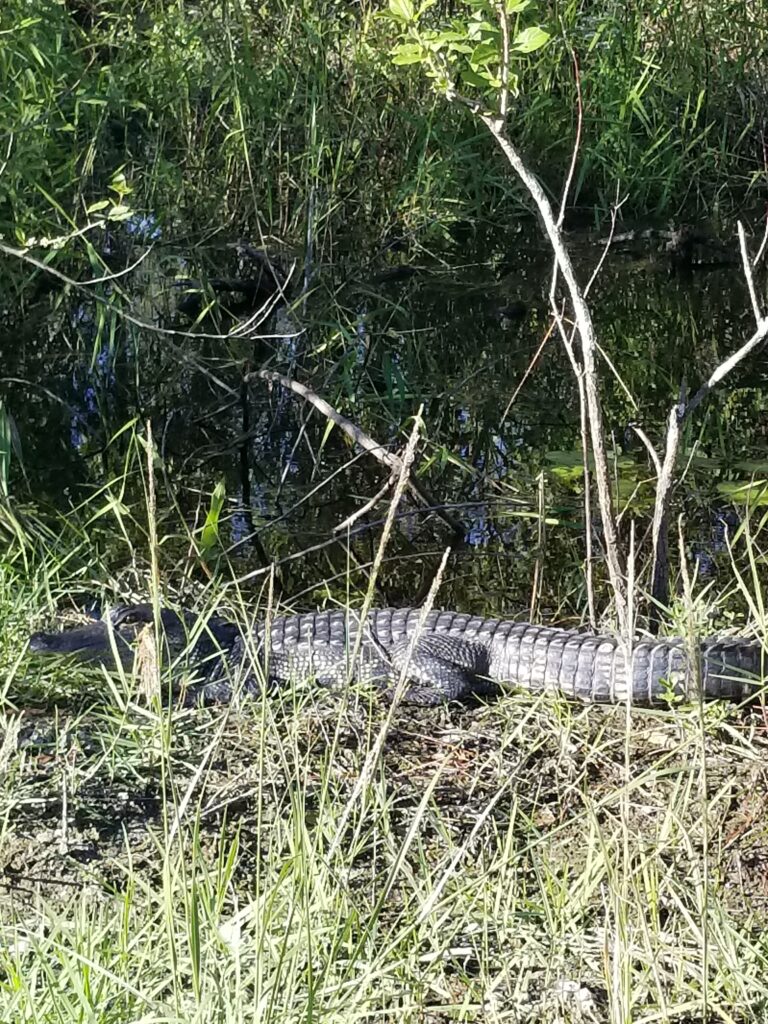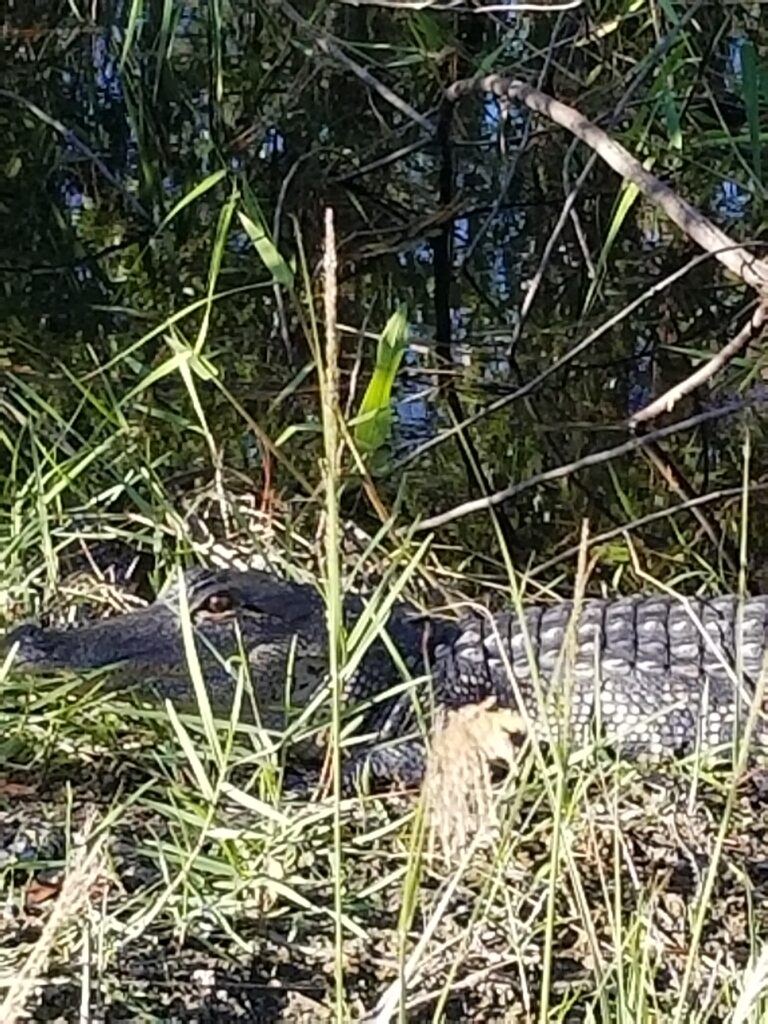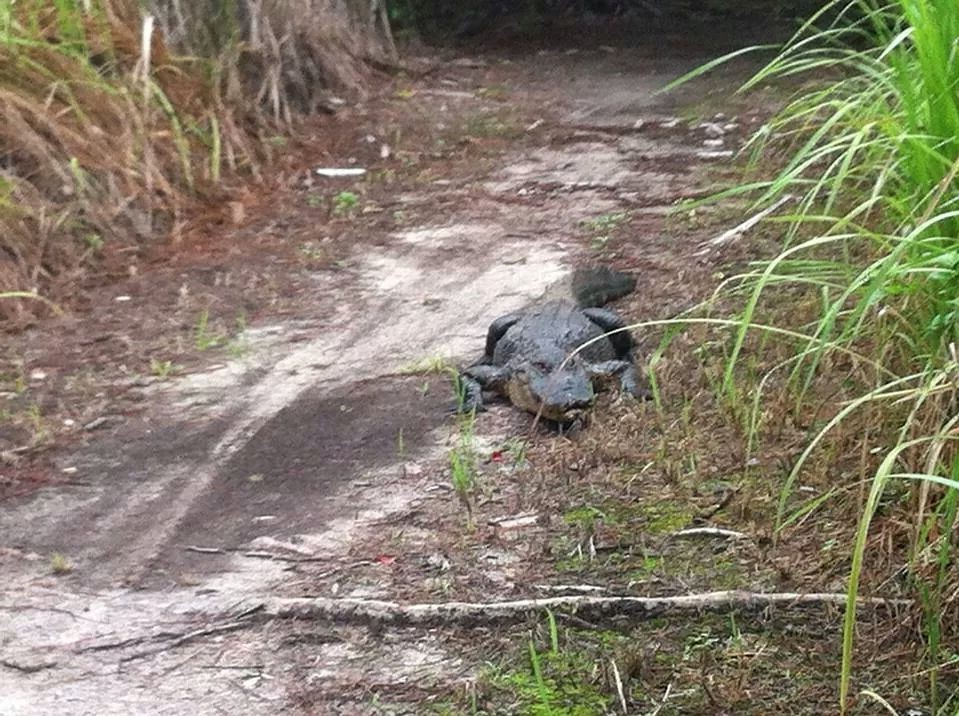
American Alligator Legal Status:
The American Alligator is classified as similarity of appearance (threatened), by the US Fish and Wildlife Service. By the American alligator being on this list, they are federally protected; but this also allows state-approved control programs and management. Florida law allows individuals that have the proper licenses and permits to legally remove the alligator.
If you are experiencing problems with a nuisance alligator please call NUISANCE ALLIGATOR HOTLINE: 866-FWC-GATOR
American alligators are in the genus alligator family called alligatoridae family which includes the crocodilia. American alligators; more commonly known as alligators or gator, average in size between 13 feet and weighing over 700 pounds, some may reach lengths up to 14 feet and weigh as much as a ton, with the exception of the female alligators; that usually do not exceed more than 9 feet long. The longest alligator on record as of today is in Florida is 14 feet 3-1/2 inches. Florida’s heaviest alligator on record as of today is 1,043 pounds and just over 13 feet.
The American alligator is a large semi – aquatic armored reptile that is all black , with coarse scales or bony plates covering its entire body. Their eyes and nostrils are prominent, just slightly raised above the rest of its head. Its snout is round, the head is large and long with 40 top and 40 bottom visible teeth, along the edge of its powerful jaws. Their legs are short and the toes are webbed, with 5 on the front and 4 on the rear. Its tail is muscular and very powerful which is almost as long as its body. An alligator can live from 30 to 50 years.The American alligator is native only to the United States and China. They are found throughout Florida, Georgia, Alabama, Mississippi, North Carolina, Louisiana, Eastern Texas, Oklahoma and Arkansas. They inhibit or prefer freshwater environments such as swamps, wetlands, ponds, marshes, rivers, lakes as well as brackish areas. Alligators construct holes in the wetlands that increase plant diversity and also provide habitats for other animals when they abandon the holes. Therefore they are important for maintaining the ecological system in the wetlands.
Alligators are opportunistic predators. They prey on anything that is assailable to them, this includes their own species. They prey on a variety of large animals such as deer and feral hogs as well as invertebrates, fish, birds, turtles, amphibians and other mammals. Alligators ambush their prey from the edge of the water, grabbing them and pulling them into the water, vigorously rolling around repeatedly, known as the death roll, drowning its prey.
Large male alligators are solitary and territorial. The largest of the male or female will defend its prime territory. Although, often finding the smaller alligators in groups near each other, as they have a higher tolerance of other alligators around the same size. Female alligators mate when they are about 7 to 12 years of age. Mating season occurs during the months of April and May. Alligators create nests or gator holes in vegetation, sticks, leaves and mud or near the water to lay their eggs; laying any where from 40 to 45 eggs on average. Once the female has laid her eggs; which is in late June or the beginning of July, they then begin to cover the nest with more vegetation to keep the eggs warm. When the eggs hatch the mother immediately carries them to the water. They are guarded by their mother and when the hatchlings are in distress they communicate by a high-pitched yelp. After time the mother eventually becomes more aggressive towards their young, which encourages them to leave.
Alligators depend on external heat sources to regulate their body temperature. They do this by basking in the sun or moving to areas that have warmer temperatures. During the summer months when the temperatures are in the 90’s; is when the alligators are most active. They become dormant and stop feeding during the winter months when temperatures drop below 55 degrees. During this dormant time they are usually found in their “dens”, only coming out on warmer days.
According to the most current study that concluded crocodilians, including alligators have evolved from its dinosaur ancestor which subsequently existed to the common ancestor shared with other reptiles. Although alligators are classified as reptiles, they are related closer to birds thus being their closet ancestors that were dinosaurs.


